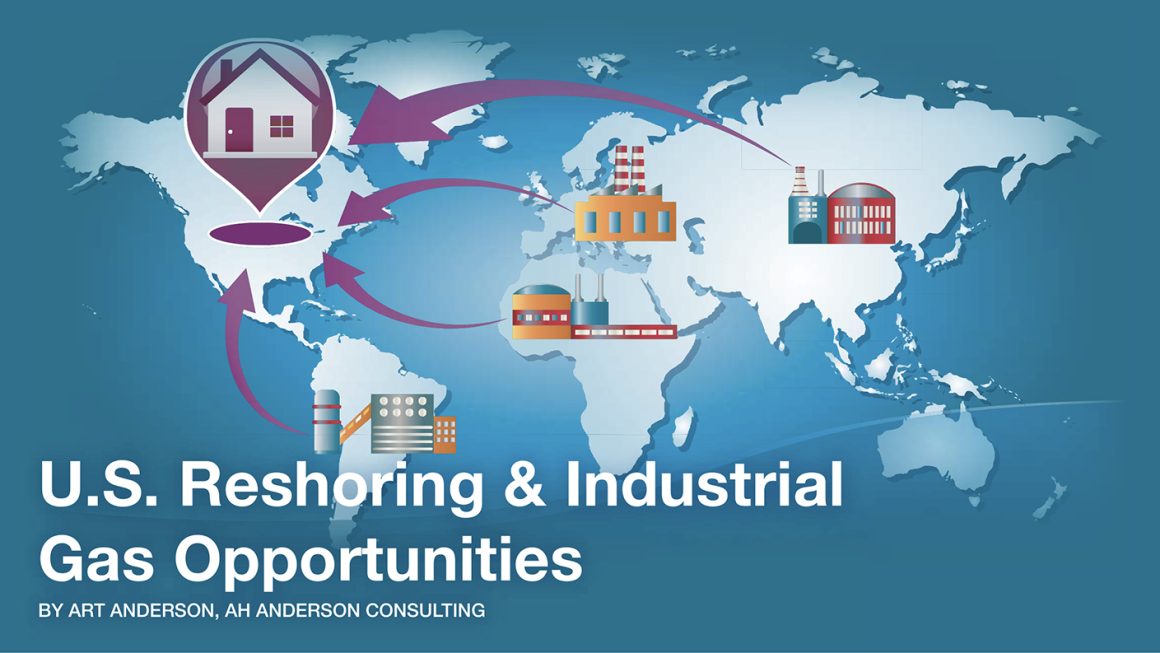Thanks to David Schaer (President, CU) for his contribution. The content for this blog was published in the March 2020 US Print edition of GasWorld.
The use of the term ‘ERP’ (Enterprise Resource Planning) can get some senior executives and business owners a little nervous. Some recall the implementation failures during ERP’s early days, or the lower than expected returns on the investment (ROI) for some of their peers. Whatever the reason, since Gartner coined the term ‘ERP’ in 1990, describing the evolution of materials requirements planning (MRP and MRP II) beyond manufacturing into other parts of the business such as finance and HR, the adoption of ERP has been a slow and steady rise across all industries.
Large corporations were the early
adopters, but due to reduced technology
costs, improved system performance and
capabilities, small-to-mid-size businesses
are moving (or exploring a move) to
an ERP system. This article will discuss
some of the ERP trends, rationale for
considering a move to an ERP platform,
and the best practices to ensure success.
Before we get too far along, let’s define what we mean by ERP. Enterprise resource planning software standardizes, streamlines and integrates business processes across finance, human resources, procurement, distribution and other departments. Every organization manages people, purchases products and services, sells products/services and manages money.
The way each of these activities is handled will vary, but in most cases, it
is more effective to handle these tasks through an integrated software platform than through multiple applications never designed to work together. So yes, ERPs may make sense at a high-level, but here are some additional reasons companies have historically decided to implement an ERP system:
• Simplify IT footprint – the cost of maintaining multiple legacy systems that often have limited capabilities, reaches a point where it makes sense to do a wholesale change, and upgrade features/functionality at the same time
• Standardization – there is a desire to simplify/standardize how companies perform certain tasks as they grow regionally/globally (taking customer orders, managing HR/finance information, vendor management)
• Cost reduction/productivity – the ultimate driver is cost reduction which factors into the above items which the ERP achieves, by enabling employees to be more productive
• Enabling business growth – strategically companies realize that an ERP is one of the key decisions a company will make, enabling them to better support regional/global business growth.
David Schaer, who’s been President of Computers Unlimited (CU) for over 10 years now, shares similar reasons why companies move to ERP systems.
Here at CU, the company’s TIMS ERP system strives to be a single solution for distributors of all sizes with a common goal to unify business processes, data, and analytics under one system to run a successful business.
David Schaer, President of Computers Unlimited (CU)
As a result, many industries including all the Tier One industrial gas companies have implemented one or more ERPs across their enterprises.
Trends
The capabilities of ERP systems have been dramatically influenced by the
same trends affecting almost every industry including digital, mobile and IOT technologies, as well as the continual improvement in the power/speed of the underlying architecture. These influences have contributed to some of the following ERP trends:
Cloud-based ERP
One of the fastest growing segments of the ERP space since the cost can be up to 30% less than on-premise (onsite) systems with equivalent functionality. Software and hardware is provided and hosted by the supplier and is scalable for growth – you pay for what you use, so your ROI is faster.
In IDG’s most recent Cloud computing survey, 73% of companies have at least one application already in the cloud, with another 17% who planned to do the same in 2019. In addition, 30% of all IT budgets were allocated to cloud computing.
Customer experience solutions
CRM suites integrated with business intelligence and e-commerce functionality continue to improve, enabling companies to better target prospects and optimize their customer base. Salesforce and Adobe are the dominant players in this space, but there are a host of smaller cloud-based options to fit almost any budget.
Real-Time Logistics Systems
These systems are leveraging more and more IoT devices throughout the supply chain (SC), and forecasting models using machine learning (ML) algorithms to schedule deliveries. In our industry, these capabilities are often not adequate enough in the base ERP platform and require ‘best of breed’ solutions to integrate with the ERP.
Social integration
Different forms of social media, such as discussion forums and instant messaging, have long been a part of certain ERP systems, but examples such as Microsoft’s Social Engagement App allows companies to track multiple social media platforms, obtain data and push further engagement.
Emerging technology integration
There are several just beginning to disrupt the ERP industry including artificial intelligence (AI), robotic process automation (RPA), blockchain, Chatbots and Augmented reality to name a few. In a recent Accenture article, 72% of executives believe that AI in the enterprise is a business advantage for the future, however, only 4% of businesses’ ERPs have this intelligent ‘tech’ as a core part today. Schaer states,
Many of these trends are driven by the need to offer more flexibility to the customer. Our strategy is to be ready for what comes next, and one way to achieve this is by incorporating standard interfaces that enable ERP systems to easily connect with third party solution applications that complement your own system. Our telemetry and logistics interfaces are an example of this.
David Schaer, President of Computers Unlimited (CU)
These trends are moving quickly, but why should we consider moving to an ERP today? I think the simple answer is that you cannot afford NOT to make the move. Every company’s situation is unique, but below is a short list of challenges that may be indicators the time has come to explore a move to an ERP:
• Customer complaints – Every business will have complaints, but if your company is going through an unusual increase, it’s time to make a change. Typically complaints originate from billing issues, running out of stock, delayed/missed deliveries, and off-spec product/service quality, all of which can be minimized/avoided with an ERP system.
• Working capital – As your business grows, so will your working capital requirements. However, if you notice a step change increase, then it’s time to take a closer look. ERP implementations free up working capital, as a result of improved operational efficiency and inventory control.
• ‘Last Man’ standing – If all of your similar-size competitors have ERP systems and you’re the only one without one, this is a sure sign that you should explore implementing an ERP.
• Constrained growth – Your business has opportunities grow, and you even begin to add new customers, but your existing system is ‘choking’ and simply cannot handle the additional growth. ERP systems are able to easily scale while at the same time maintain seamless integration across your business from sales through operations.
• Lack of trust in the numbers – If finance and operations personnel are having to manually run the numbers or having to double check them regularly that’s a problem. The classic example is having sold more product than your inventory shows. If the resources/time to ensure the numbers are accurate is rising, it’s time to explore an ERP. You establish one ‘version of the truth’ and gain real-time insight into all of your business processes via metrics regularly generated by the ERP.
Next steps
Due to the longevity (decades) of the ERP platforms, with experience in almost every industry on the planet, we clearly understand what a successful implementation looks like.
These systems may have been around
for decades but the same time, ERPs
are re-inventing themselves by taking
advantage of the new technology available
and becoming more cost-effective for
small to medium-size businesses.
In a recent Aberdeen Group article, small business owners reduced operation costs by 11%, standardized back-office processes by 77%, and increased real- time visibility into their data by 48% from their ERP implementation. In addition, Panorama Consulting Group an independent, technology agnostic firm that specializes in ERP system implementations and independent of any vendor affiliation recently stated that 96% of growing businesses who excel in their respective industries rely on an ERP system. So, the question remains, what are you waiting for?
ABOUT THE AUTHOR
Art Anderson is a Senior Business Management Executive with 20+ years of experience in the industrial and specialty chemical industries. He has specific expertise in optimizing commercial operations, implementing shared business services, leveraging process excellence tools and processes, and improving both internal and external customer focus. Previously, Art was a Director for a Fortune 300 company, and member of the executive team leading the transformation from SS to a GBS framework. Learn more at www.linkedin.com/in/artandersonjr. Art can be reached directly at artanderson100@gmail.com.




